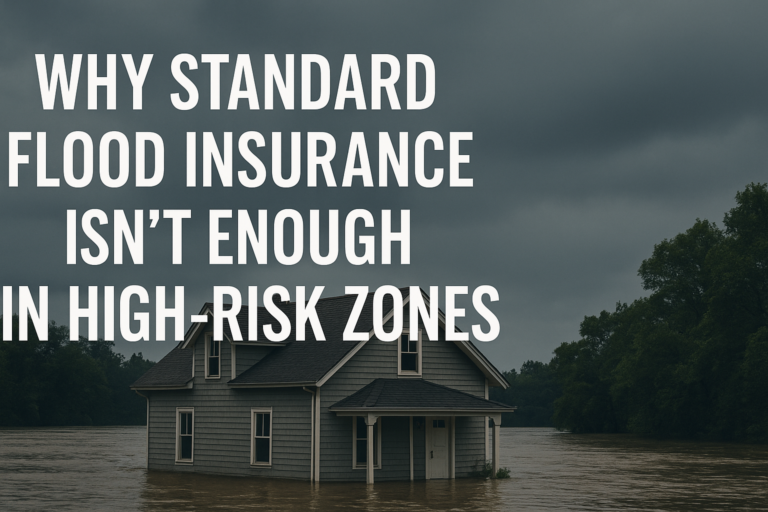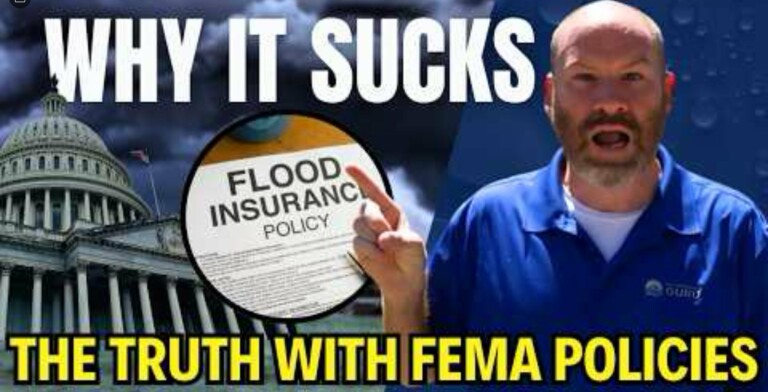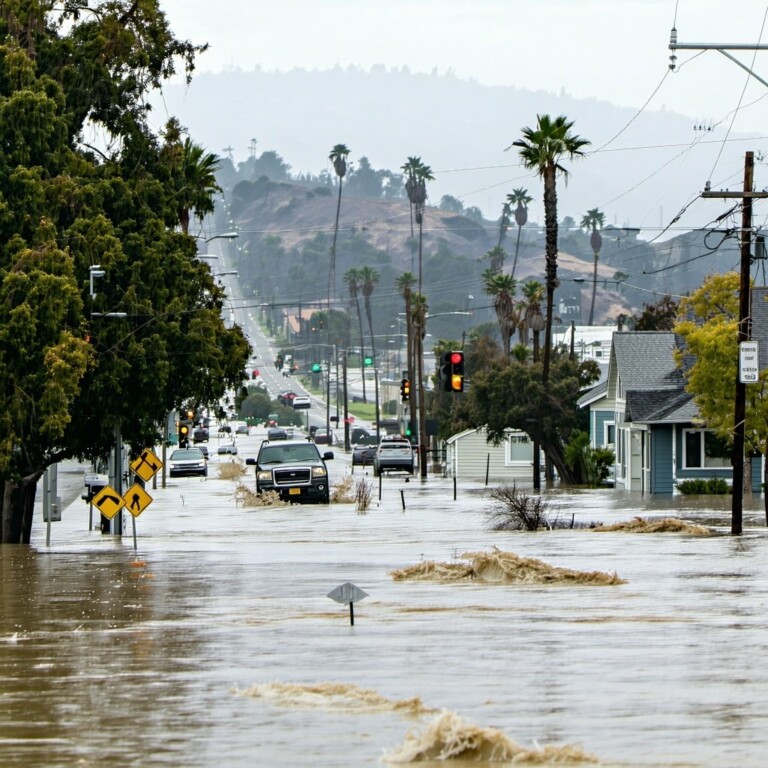Flood Insurance Coverages Explained
4 Key Coverages in Flood Insurance Explained
Flood insurance can often feel like a maze of confusing terms and complex policies, especially if you’re new to understanding flood risk or insurance coverage. Whether you live right on the water or miles inland, knowing the ins and outs of your flood insurance policy is essential for protecting your property and managing your financial risk. Here, we’ll break down the four key coverages found in a standard flood insurance policy under the National Flood Insurance Program (NFIP), helping you make informed decisions about your flood protection.
This guide is inspired by insights from Chris Greene at The Flood Insurance Channel, who brings an educational background in flood mitigation to help homeowners better understand their flood insurance options. By the end of this article, you’ll know exactly what Coverage A, B, C, and D mean and why each one matters for your home and belongings.
Understanding Flood Insurance: Why It Matters
Flooding is one of the most common and costly natural disasters in the United States. It’s important to realize that standard homeowners insurance policies typically do not cover flood damage. This is where flood insurance steps in. Whether you’re in a designated flood zone or not, having the right flood insurance coverage is crucial to protect your property from financial devastation caused by floodwaters.
Flood insurance policies under the NFIP are designed to cover specific types of damage and losses related to flooding events. These policies are structured into four main coverages, each addressing different aspects of flood damage. Understanding these coverages can help you avoid surprises when filing a claim and ensure you have the right protection in place.
The Four Key Coverages in a Standard Flood Insurance Policy
Coverage A: Building Coverage
Coverage A is the cornerstone of any flood insurance policy. It protects the physical structure of your home or building. This includes the walls, floors, foundation, electrical and plumbing systems, HVAC, and built-in appliances like dishwashers and water heaters.
Why is Coverage A so important? Because when floodwaters invade your property, the structural damage can be extensive and costly to repair. Without adequate building coverage, you might face significant out-of-pocket expenses to restore your home to its pre-flood condition.
Keep in mind that Coverage A applies strictly to the building itself, not to any personal belongings inside. It’s crucial to review the limits of your building coverage and ensure it aligns with the value of your home and the potential risks you face in your flood zone.
Coverage B: Personal Property Coverage
While Coverage A protects your home’s structure, Coverage B focuses on your personal belongings inside the home. This includes furniture, clothing, electronics, and other contents that could be damaged or destroyed by floodwaters.
Many homeowners underestimate the value of their personal property when purchasing flood insurance, but the cost to replace or repair these items can add up quickly after a flood. Coverage B helps cover those losses, giving you peace of mind that your belongings are protected.
It’s worth noting that Coverage B has separate limits from building coverage, and certain items may have sub-limits or exclusions. For example, valuable items like jewelry or important documents might require additional protection through endorsements or separate policies.
Coverage C: Other Coverages
Coverage C covers additional expenses that might arise from a flood event but don’t fall neatly into building or personal property categories. One of the most common examples is hotel expenses after a flood. After a flood, your property might be littered with debris that is not part of your home or belongings but needs to be cleared away to begin repairs and restoration. You might need a place to stay while this is happening. This would fall under additional living expenses. It is important to understand in 2025 NFIP does not currently offer this coverage.
Debris removal under Coverage C can cover costs associated with safely disposing of flood-damaged materials, vegetation, and other items that don’t belong in your structure. This coverage is often overlooked but can be a significant help in managing post-flood cleanup.
Other miscellaneous expenses related to flood damage, such as certain legal or emergency costs, may also be covered under this category, depending on the specific terms of your policy.
Coverage D: Increased Cost of Compliance (ICC)
Coverage D is perhaps the most critical for long-term flood resilience. Known as Increased Cost of Compliance (ICC), this coverage helps homeowners pay for the cost of bringing their property up to current floodplain management regulations after a flood loss.
What does that mean in practice? If your home is substantially damaged by floodwaters, local building codes and ordinances might require you to elevate your home, floodproof it, or make other modifications to reduce future flood risk. These improvements can be expensive, and ICC coverage helps cover those costs.
ICC is a powerful tool for loss avoidance. By helping you upgrade your home to meet current standards, it reduces the likelihood of future flood damage and can ultimately lower your flood insurance premiums over time.
Why Knowing Your Flood Insurance Coverages Matters
Understanding these four coverages—Building Coverage, Personal Property Coverage, Other Coverages, and Increased Cost of Compliance—is vital for several reasons:
- Proper Protection: Ensuring you have the right coverage levels for both your structure and belongings means you won’t be left financially vulnerable after a flood.
- Informed Claims: Knowing what each coverage entails helps you navigate the claims process smoothly and understand what costs will be reimbursed.
- Risk Mitigation: ICC coverage supports long-term flood mitigation, helping you protect your property against future floods and potentially reduce premiums.
- Peace of Mind: Floods can be devastating, but having a clear understanding of your policy reduces stress and uncertainty.
Additional Tips for Managing Flood Insurance
Flood insurance policies under the NFIP have specific rules and limits, so it’s important to regularly review your policy and consult with experts who understand flood risk and mitigation strategies.
Consider the following tips:
- Check Your Flood Zone: Flood zones, like Flood Zone AE, indicate the level of flood risk in your area. Knowing your flood zone helps you understand the likelihood of flooding and what coverage you might need.
- Get an Elevation Certificate: An elevation certificate provides detailed information about your property’s elevation relative to the floodplain. This can affect your flood insurance premium and eligibility for certain coverages.
- Evaluate Coverage Limits: Make sure your building and contents coverage limits reflect the current value of your home and belongings. Underinsurance can leave you with significant out-of-pocket expenses.
- Consider Mitigation Measures: Flood mitigation improvements, like elevating your home or installing flood vents, can reduce your flood risk and lower insurance premiums.
- Ask Questions: If you’re unsure about any aspect of your policy or flood risk, seek guidance from flood insurance professionals or visit trusted resources like floodinsuranceguru.com.
Conclusion: Take Control of Your Flood Insurance Today
Flood insurance is a critical piece of protecting your home and belongings from the unpredictable nature of flooding. By understanding the four key coverages—Coverage A for your building, Coverage B for your personal property, Coverage C for other expenses like debris removal, and Coverage D for Increased Cost of Compliance—you can confidently select the right policy for your needs.
Don’t let flood risk overwhelm you. With the right knowledge and coverage, you can minimize flood losses, reduce premiums, and safeguard your property for the long term. If you have questions or want personalized guidance, visit floodinsuranceguru.com and tap into expert flood education resources designed to help you navigate this complex topic.
Your property deserves the best protection—start today by understanding your flood insurance coverages and taking steps to mitigate your flood risk.

Information contained on this page is provided by an independent third-party content provider. This website make no warranties or representations in connection therewith. If you are affiliated with this page and would like it removed please contact editor @producerpress.com







